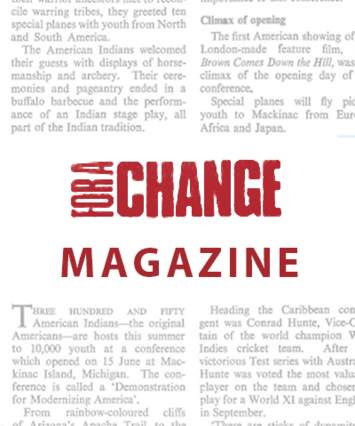By AILSA HAMILTON
Reflection: this is one of the most difficult qualities to bring into contemporary life, wherever we happen to be living it. Existence is filled by the need for food and a roof; or, where these are assured, by the apparent necessity to expand one's horizons, material or mental. Our view extends in different directions and to different distances-but for the most part horizontally, to what we can understand and handle. We know that we are in need of another dimension, the vertical dimension, to create the space for growth. But how are we to let it in? Our own reflections, and reflections from the light of eternal truth, allow this dimension to exist.
To some extent, we all reflect naturally. Such reflection can be fragmentary - a few gulps of breath in a busy day, an instant perception of how to escape from danger; pragmatic-the necessary preparation for a meal or an encounter; narcissistic - the contemplation of our own thoughts and emotions and needs. This level of reflection does help us to stop treating life like an express train, ignoring any factor except its destination. But left there, it soon reaches its limits and becomes repetitive. By some law of human nature, the shadows tend to blot out the gleams as our thoughts revolve around themselves.
The reflection which brings a change has to come from outside ourselves, from some source of light. The first step towards this light is, in fact, a step back - away from the contemplation of myself, so that a larger landscape can appear. This is already a step of courage, as it lets in the unknown and alters the proportions of my own universe; and as with all steps of courage, it leads to new discoveries. But where does the light come from?
There is the light of conscience, that still sense of what is selfless and creative. This light can illuminate the choice between alternative actions. To follow this sense of right and wrong is the second step along the road of discovery.
Then comes a third step - towards the light of destiny, of the purpose for my being on the planet. Taking this step means affirming a belief in a purpose for creation, a purpose in which every created being has a place, and in a creator of both purpose and being: in other words, in a loving God. For some people, the discovery of a relationship with God comes first; for others, the discovery of purpose leads to a relationship with the Creator. For all who take this step, the door is opened to inner security, to that elusive quality called 'fulfilment', and to a clear sense of direction in the overall pattern of life beyond our daily doings. It also makes one part-perhaps unconsciously at first-of the network of people whose lives are used to shape the world to God's design.
The will as well as the imagination needs to be touched by the light. This means consciously letting in the light, making a time daily for placing heart and mind unreservedly before the will of the Creator, and letting his will become ours. This brings us back again from the vertical to the horizontal-to the facts of our daily life and our contemporary society, to the anguish in our own hearts and our neighbours' hearts, to the empty stomachs and disillusioned souls which plague our century. When our reflection catches gleams of the eternal light, our view of the horizontal alters, attitudes naturally alter to match, and actions become fruitful.
At this junction of the vertical and the horizontal is life.
English


